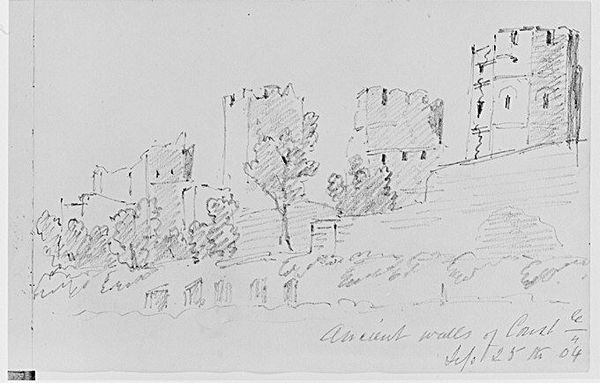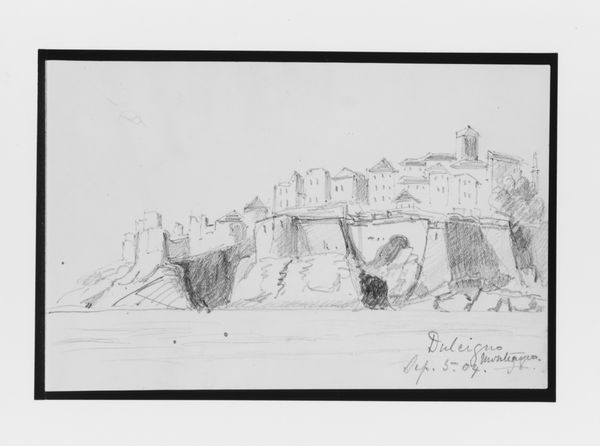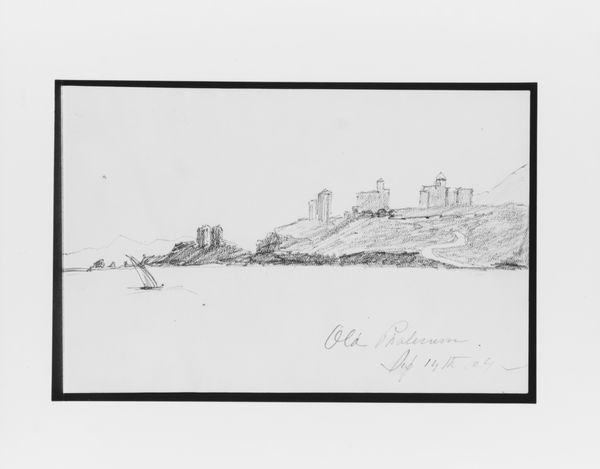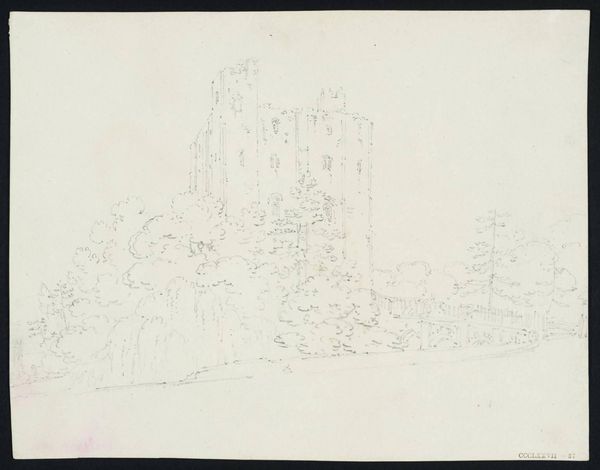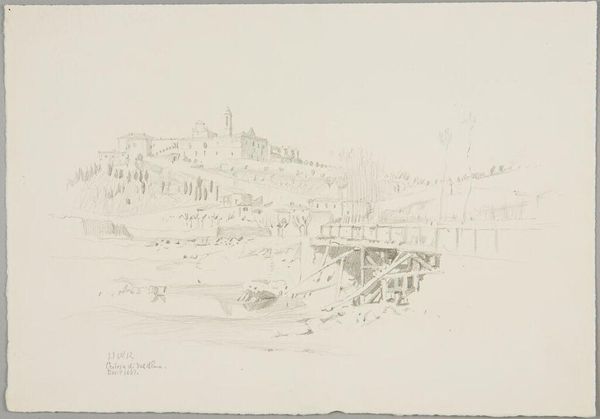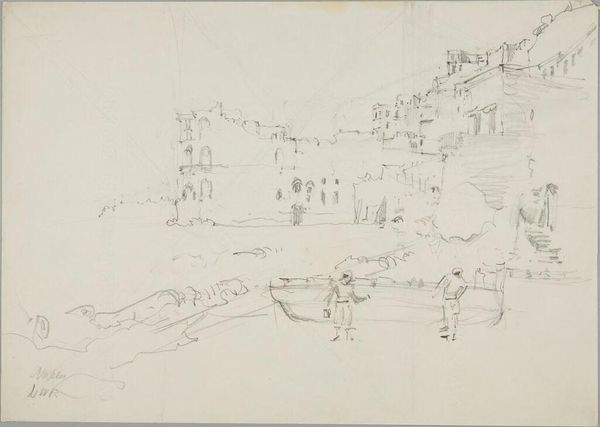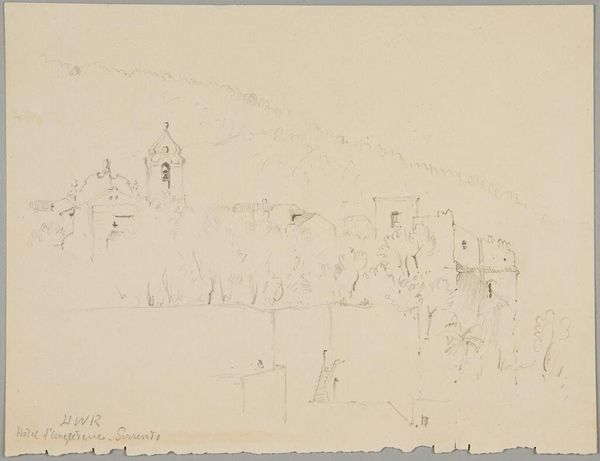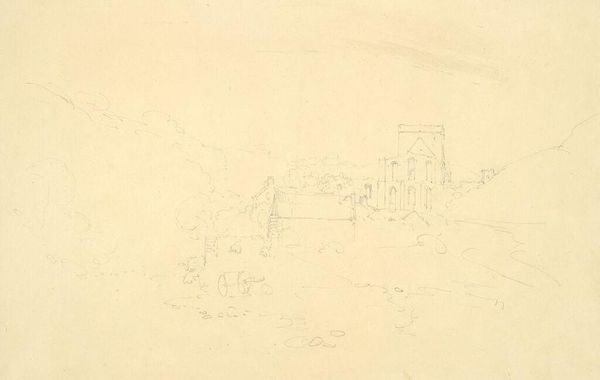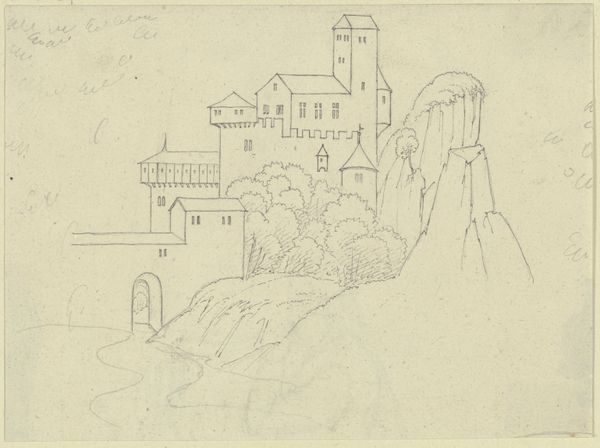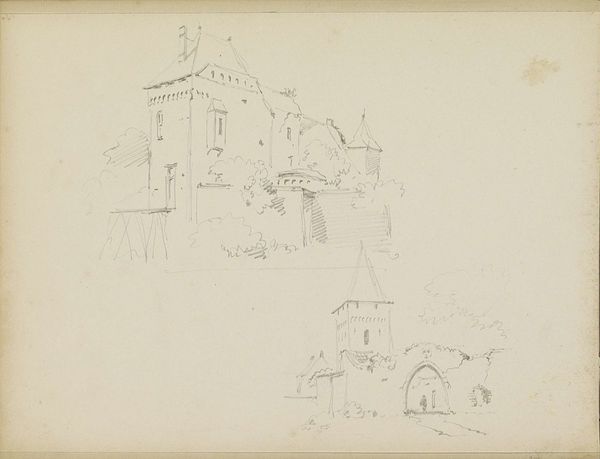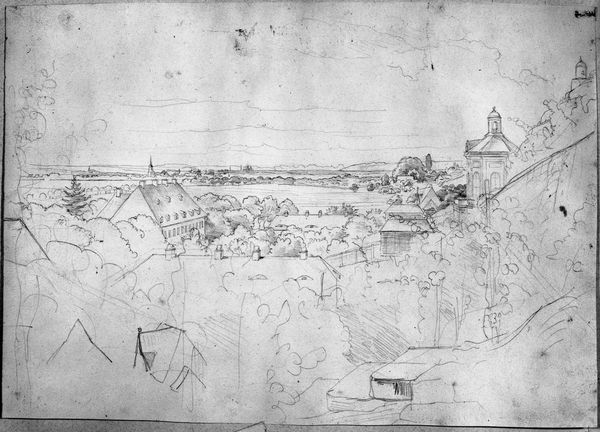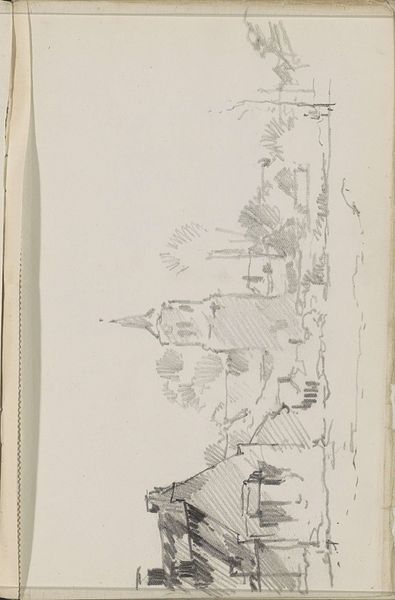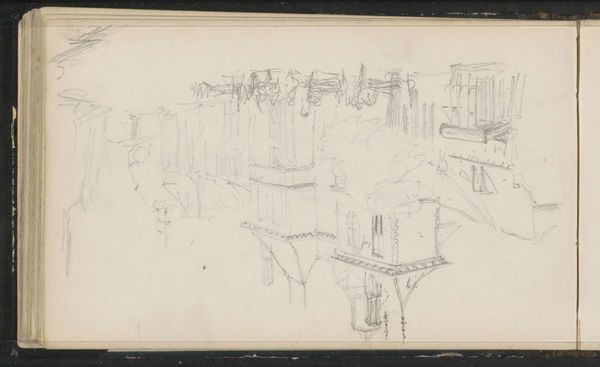
#
tree
#
amateur sketch
#
comic strip sketch
#
thin stroke sketch
#
incomplete sketchy
#
ink drawing experimentation
#
hand drawn
#
thin linework
#
rough sketch
#
hand-drawn
#
initial sketch
#
building
Dimensions: 5 7/8 x 8 5/8 in. (14.9 x 21.9 cm)
Copyright: Public Domain
Editor: Here we have Mary Newbold Sargent’s 1904 work, "Ancient Walls, 1904 (from Sketchbook)." It's a delicate pencil sketch. It almost feels like looking at a dreamscape; faint lines suggest ancient structures. What strikes you most about it? Curator: What I find compelling is the intersection of the personal and the political, even in what appears to be a simple landscape sketch. This image exists within a historical context—early 20th century. Walls, ancient or otherwise, can be understood as both physical and metaphorical barriers, right? Think about class, gender, access... what does it mean to sketch walls when so many were being built, both literally and figuratively? Editor: That's fascinating. I hadn’t considered that. So, you're saying the act of sketching, even casually, could be seen as a kind of commentary? Curator: Precisely. Consider Sargent’s position as a woman artist in that era. Access to education, recognition, even simply being taken seriously – these were all "walls" she had to navigate. Does the sketchy, incomplete nature of the work perhaps suggest a critique of those very structures? Or perhaps a longing to escape them, to simply capture a moment of beauty amidst societal constraints? Editor: That makes me rethink the whole image. At first, I just saw an architectural study. Curator: It is that, but art rarely exists in a vacuum. The act of choosing what to depict, and *how* to depict it, is inherently a political act. How do you think the choice of such a quick and personal medium like pencil on paper impacts our understanding of her intentions? Editor: I suppose it suggests intimacy and perhaps a lack of pretension, setting the image apart from, say, grand oil paintings which were for the establishment? I’ll definitely look at sketches differently from now on. Curator: Exactly! Recognizing that art engages with larger cultural and political narratives opens up new avenues for interpretation. Next time, we might reflect more on the specific geographical setting and its impact on Sargent’s perception, as well.
Comments
No comments
Be the first to comment and join the conversation on the ultimate creative platform.
